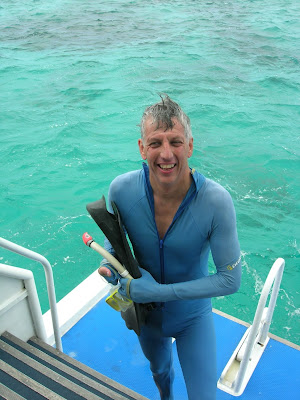 new experiences - and we have had lots of those.
new experiences - and we have had lots of those.Carolyn and I have had fun doing this blog, and we hope you have enjoyed it too.
To sum, some final stats: The total miles flown round the world:
And, a summary of the time zones and changes we travelled through. You can  see that the 24 hours lost when we crossed the International Date Line exactly compensated for all the other changes. Which is what you would hope would happen, since we ended up exactly back where we started.
see that the 24 hours lost when we crossed the International Date Line exactly compensated for all the other changes. Which is what you would hope would happen, since we ended up exactly back where we started.
 see that the 24 hours lost when we crossed the International Date Line exactly compensated for all the other changes. Which is what you would hope would happen, since we ended up exactly back where we started.
see that the 24 hours lost when we crossed the International Date Line exactly compensated for all the other changes. Which is what you would hope would happen, since we ended up exactly back where we started.Until the next Big Trip!

 And we didn't see one Kangaroo while we were in Australia. But of course we have one at home:
And we didn't see one Kangaroo while we were in Australia. But of course we have one at home: 





 The small skyscrapers in the picture are tall - must be 50 or 60 storeys high. The really big one is therefore abolsutely massive - it's the '2IFC' (IFC stands for the International Finance Centre) and it must be well over a 100 floors high.
The small skyscrapers in the picture are tall - must be 50 or 60 storeys high. The really big one is therefore abolsutely massive - it's the '2IFC' (IFC stands for the International Finance Centre) and it must be well over a 100 floors high.
















